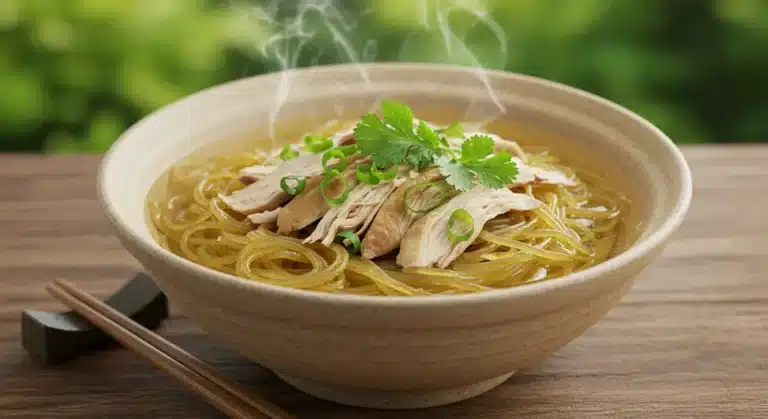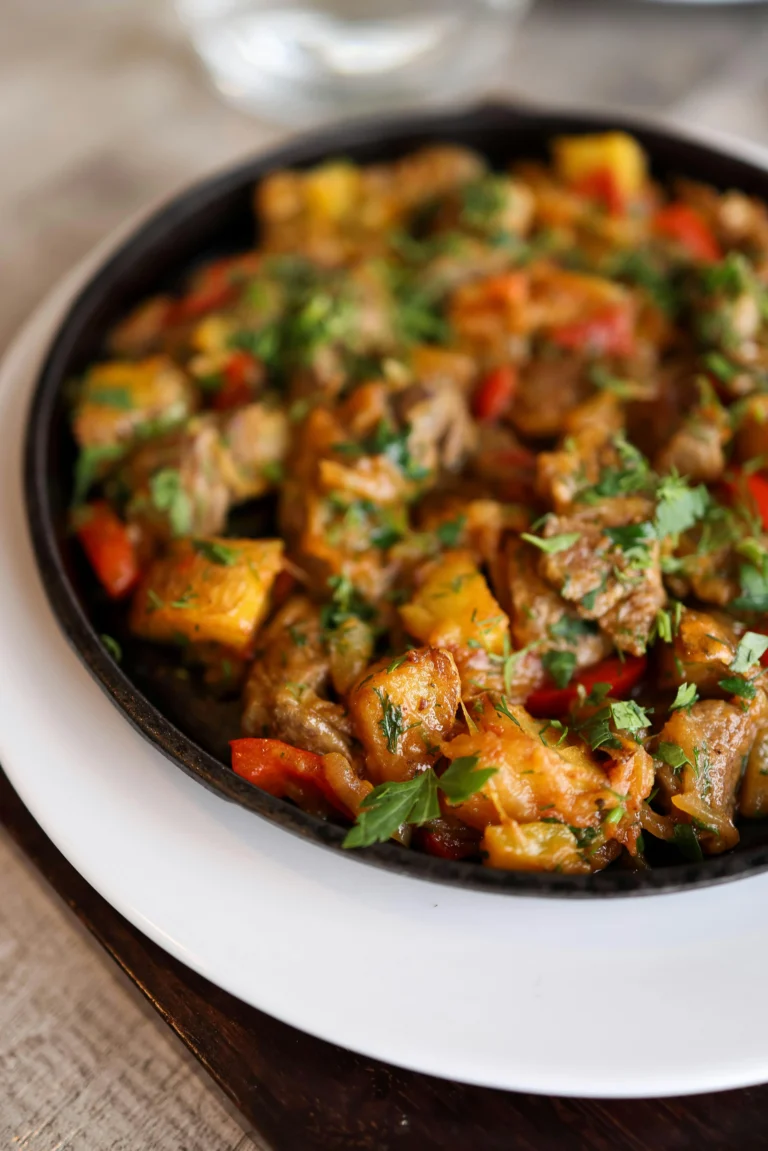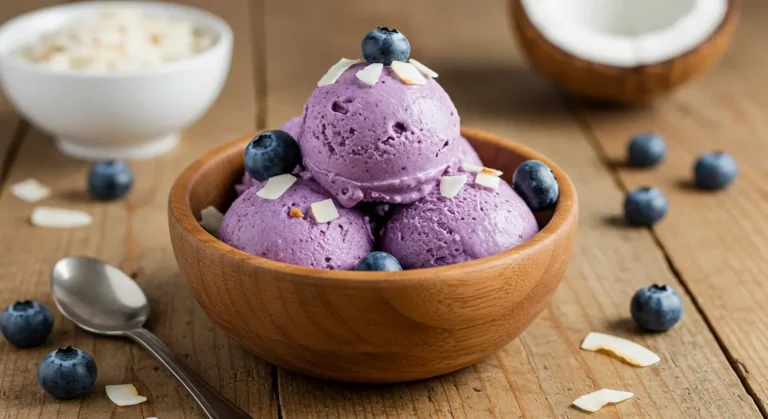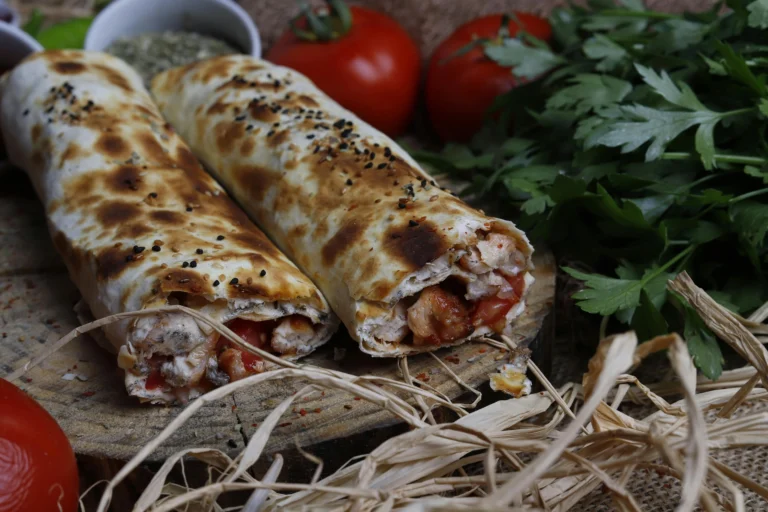Vibrant Korean Tofu Salad: A Refreshing Plant-Based Delight with Authentic Flavors
A colorful, protein-packed Korean tofu salad that combines crispy tofu, fresh vegetables, and a spicy-sweet gochujang dressing. Perfect as a light meal or impressive side dish!

Table of Contents
Introduction
Korean cuisine has captivated food enthusiasts worldwide with its bold flavors, vibrant colors, and perfect balance of textures. Among its many treasures is the Korean tofu salad, a nutritious, versatile dish that showcases the beauty of plant-based cooking while delivering an explosion of authentic Korean flavors.
This recipe combines the silky texture of perfectly prepared tofu with the crunch of fresh vegetables, all unified by a tantalizing gochujang-based dressing that perfectly harmonizes spicy, sweet, and savory notes. Whether you’re a seasoned Korean food aficionado or just beginning to explore this rich culinary tradition, this tofu salad is an accessible entry point that doesn’t compromise on authentic flavor.
What makes this Korean tofu salad special is its adaptability. You can enjoy it as a satisfying main course, serve it as an impressive side dish at gatherings, or prepare it as part of your weekly meal prep routine. The ingredients are readily available at most grocery stores or Asian markets, making this exotic-tasting dish surprisingly accessible for home cooks of all experience levels.
Let’s dive into this nutritious, flavor-packed recipe that brings a taste of Korea right to your kitchen!
Equipment Needed
To prepare this delicious Korean tofu salad recipe, you’ll need:
- Large non-stick skillet or wok
- Mixing bowls (small and large)
- Sharp knife and cutting board
- Measuring spoons and cups
- Whisk or fork for mixing the dressing
- Paper towels for draining tofu
- Wooden spoon or heat-resistant spatula
- Salad serving bowl or platter
Ingredients

For the Crispy Tofu:
- 1 block (14-16 oz) extra-firm tofu
- 2 tablespoons cornstarch
- ½ teaspoon salt
- ¼ teaspoon black pepper
- 3 tablespoons vegetable oil
For the Salad Base:
- 4 cups mixed salad greens (romaine, spring mix, or baby spinach)
- 1 medium cucumber, thinly sliced
- 1 medium carrot, julienned or grated
- 1 red bell pepper, thinly sliced
- ½ cup thinly sliced red cabbage
- ¼ cup thinly sliced red onion
- ½ cup kimchi, drained and roughly chopped
- 3 green onions, thinly sliced
For the Gochujang Dressing:
- 2 tablespoons gochujang (Korean red pepper paste)
- 1 tablespoon sesame oil
- 2 tablespoons rice vinegar
- 1 tablespoon soy sauce (or tamari for gluten-free option)
- 1 tablespoon honey or maple syrup
- 1 tablespoon fresh lime juice
- 1 teaspoon minced garlic
- 1 teaspoon grated ginger
For Garnish:
- 2 tablespoons toasted sesame seeds
- 2 tablespoons chopped fresh cilantro (optional)
- 1 tablespoon crushed roasted peanuts (optional)
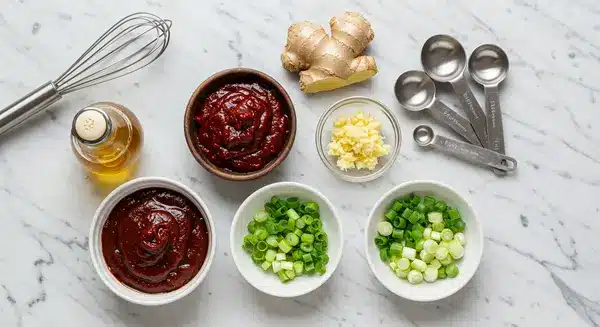
Instructions
Preparing the Tofu:
- Drain and press the tofu: Remove tofu from packaging and drain excess water. Wrap the tofu block in paper towels and place a heavy object (like a cast-iron skillet) on top. Let it press for at least 15 minutes to remove excess moisture.
- Cut and season the tofu: Once pressed, cut the tofu into 1-inch cubes. Place in a bowl and sprinkle with cornstarch, salt, and pepper. Gently toss until all pieces are evenly coated.
- Crisp the tofu: Heat vegetable oil in a large non-stick skillet over medium-high heat. When oil is hot, carefully add the tofu cubes in a single layer (work in batches if needed). Cook for 3-4 minutes on each side until golden and crispy. Transfer to a paper towel-lined plate to absorb excess oil.

Making the Dressing:
- In a small bowl, whisk together gochujang, sesame oil, rice vinegar, soy sauce, honey or maple syrup, lime juice, minced garlic, and grated ginger until smooth and well combined.
- Taste and adjust seasoning as needed – add more honey for sweetness, more gochujang for heat, or more lime juice for acidity.
Assembling the Salad:
- In a large mixing bowl, combine the salad greens, cucumber, carrot, bell pepper, red cabbage, red onion, and most of the green onions (save some for garnish).
- Add the chopped kimchi and toss gently to combine all ingredients.
- Just before serving, add the crispy tofu cubes to the salad.
- Drizzle with about two-thirds of the dressing and toss gently to coat the ingredients. Reserve the remaining dressing for serving on the side.
- Transfer the salad to a serving platter or individual plates.
- Garnish with toasted sesame seeds, remaining green onions, fresh cilantro, and crushed peanuts if using.
- Serve immediately with extra dressing on the side.
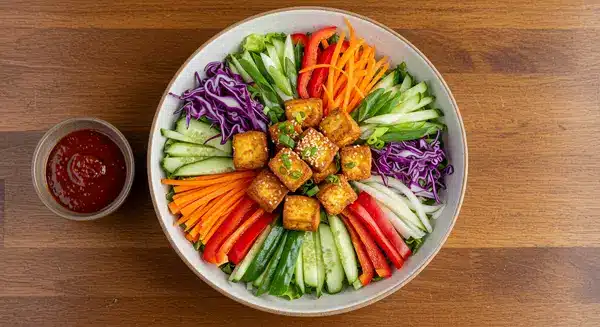
Nutrition Information
Per serving (recipe serves 4):
- Calories: 295
- Protein: 15g
- Fat: 19g
- Carbohydrates: 23g
- Fiber: 5g
- Sugar: 9g
- Sodium: 620mg
Tips for the Perfect Korean Tofu Salad
- Extra-firm tofu is essential: Using extra-firm tofu ensures it holds its shape and gets crispy when cooked. Firm tofu can work in a pinch, but medium or soft tofu will fall apart in the salad.
- Don’t skip the pressing step: Removing excess moisture from the tofu is crucial for achieving that perfect crispy exterior. If you have time, press it for up to 30 minutes.
- Customize your vegetables: Feel free to add or substitute vegetables based on what’s in season or your personal preferences. Radishes, snow peas, or thinly sliced mushrooms work wonderfully in this salad.
- Make ahead components: You can prepare the dressing and crispy tofu separately up to two days in advance. Store in airtight containers in the refrigerator. Reheat the tofu in a 350°F oven for 5-10 minutes to re-crisp before adding to the salad.
- Adjust the spice level: Korean cuisine is known for its heat, but you can easily adjust this recipe to suit your preference. Use less gochujang for a milder flavor or add a teaspoon of gochugaru (Korean chili flakes) for extra heat.
- Serving suggestions: This Korean tofu salad works beautifully as a main course or as a side dish alongside steamed rice, bibimbap, or Korean pancakes (pajeon).
Variations
Protein Alternatives:
- Replace tofu with tempeh for a different texture and nutty flavor
- Add cooked and seasoned chickpeas instead of tofu
- For non-vegetarians, grilled chicken or seared beef can be substituted
Seasonal Adaptations:
- Summer version: Add thinly sliced peaches or watermelon for a sweet contrast
- Fall version: Include roasted sweet potato cubes or thinly sliced apples
- Winter version: Add roasted kabocha squash and massaged kale
Grain Bowl Option:
Transform this into a hearty grain bowl by adding a base of:
- Cooked brown rice
- Quinoa
- Barley
- Soba noodles (served cold)
Cultural Context
Tofu has been a staple in Korean cuisine for centuries, valued for its nutritional benefits and versatility. Traditional Korean tofu dishes often feature simple preparations that highlight the delicate flavor of freshly-made tofu.
This modern Korean tofu salad represents a fusion approach, incorporating the traditional gochujang (fermented chili paste) that gives many Korean dishes their distinctive flavor, while presenting the ingredients in a fresh, contemporary salad format that appeals to today’s health-conscious diners.
Kimchi, another cornerstone of Korean cuisine, adds complexity and probiotic benefits to this dish. Its fermented tanginess balances beautifully with the creamy tofu and sweet-spicy dressing.
Storage and Make-Ahead Tips
- Dressing: Can be made up to 5 days ahead and stored in an airtight container in the refrigerator.
- Prepared vegetables: Can be sliced and stored in the refrigerator for up to 2 days.
- Crispy tofu: Best enjoyed fresh, but can be stored separately for 1-2 days and reheated in the oven at 350°F for 5-10 minutes.
- Assembled salad: Once dressed, the salad is best consumed immediately. If making ahead, store all components separately and assemble just before serving.
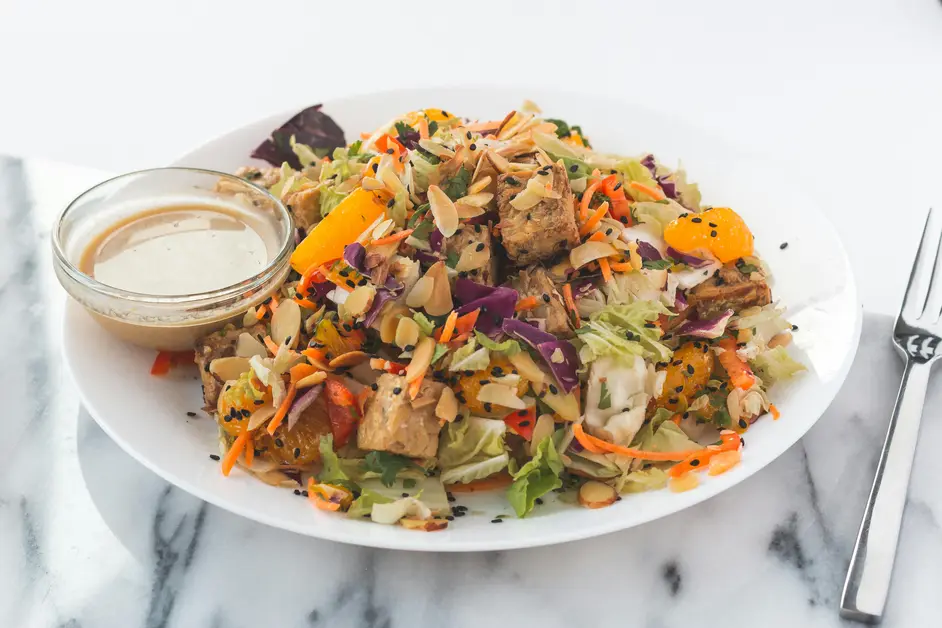
Frequently Asked Questions (FAQs)
1. Can I make this Korean tofu salad gluten-free?
Yes! Simply substitute regular soy sauce with tamari or gluten-free soy sauce. Also double-check that your gochujang is gluten-free, as some brands may contain wheat.
2. What can I substitute for gochujang if I can’t find it?
While gochujang has a unique flavor profile, you can create a substitute by mixing 1 tablespoon red pepper flakes, 1 tablespoon miso paste, 1 teaspoon honey, and a splash of soy sauce. The flavor won’t be identical, but it will provide a similar sweet-spicy-umami profile.
3. How can I make this recipe oil-free?
You can bake the tofu instead of frying it. Toss the seasoned tofu cubes with 1 tablespoon of cornstarch and arrange on a parchment-lined baking sheet. Bake at 400°F for 25-30 minutes, turning halfway through. For the dressing, simply omit the sesame oil or replace it with a tablespoon of tahini.
4. Is kimchi necessary for an authentic Korean tofu salad?
While kimchi adds authentic Korean flavor and beneficial probiotics, the salad will still be delicious without it. If omitting kimchi, consider adding a touch more acidity to your dressing with additional rice vinegar or lime juice.
5. Can I prepare this salad in advance for meal prep?
Yes! Store the components separately – keep the dressing in a small container, the crispy tofu in another container, and the vegetable mixture in a larger container. Assemble just before eating to maintain optimal freshness and texture.
6. What’s the best way to store leftover tofu?
If you have leftover uncooked tofu, store it submerged in fresh water in an airtight container in the refrigerator. Change the water daily and use within 3-5 days.
7. Can I use frozen tofu for this recipe?
Yes, frozen (and thawed) tofu has a spongier, more absorbent texture that soaks up flavors beautifully. The texture will be different from fresh tofu, less creamy but more chewy, which some people prefer.
8. What makes this an authentic Korean tofu salad recipe?
The use of traditional Korean ingredients like gochujang, kimchi, and sesame oil creates an authentic Korean flavor profile. The preparation method for the tofu and the balance of flavors in the dressing reflect Korean culinary traditions.
Conclusion
This vibrant Korean tofu salad recipe brings together the best elements of Korean cuisine: bold flavors, contrasting textures, and beautiful colors – in a healthy, approachable dish. The crispy tofu provides a satisfying protein source, while the rainbow of vegetables offers nutritional benefits and visual appeal. The gochujang dressing ties everything together with its perfect balance of spicy, sweet, and savory notes.
Whether you’re looking to incorporate more plant-based meals into your routine, explore Korean flavors, or simply enjoy a delicious and refreshing salad, this recipe delivers on all fronts. The beauty of this dish lies in its versatility; feel free to adjust the ingredients based on seasonal availability or your personal preference.
By following the detailed instructions and tips provided, you’ll create a restaurant-quality Korean tofu salad that’s sure to impress family and friends. So grab your chopsticks (or fork!) and dive into this colorful celebration of Korean cuisine.
Happy cooking and 맛있게 드세요 (enjoy your meal)!
For more salad recipes, visit us!!!

